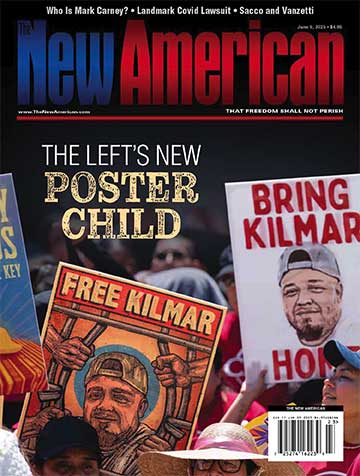
The U.S. Court of Appeals for the 5th Circuit ruled yesterday in the case of Reese v. Bureau of Alcohol, Tobacco, Firearms, and Explosives (ATF), with the three-judge panel determining that the federal government’s ban on handgun sales for 18- to 20-year-olds is unconstitutional.
The ban prohibits Federal Firearms Licensees (FFLs) from selling handguns to individuals under the age of 21. It is part of the Gun Control Act of 1968, which created 18 U.S.C. §§ 922(b)(1) and (c)(1). Those laws made it illegal for dealers to “sell or deliver”
any firearm or ammunition to any individual who the licensee knows or has reasonable cause to believe is less than eighteen years of age, and, if the firearm, or ammunition is other than a shotgun or rifle, or ammunition for a shotgun or rifle, to any individual who the licensee knows or has reasonable cause to believe is less than twenty-one years of age.
Reversing an Earlier Decision
Chief Judge Jennifer Walker Elrod and circuit judges Edith Jones and Rhesa Barksdale unanimously agreed to reverse an earlier decision regarding the ban. In their determination, the judges cited recent U.S. Supreme Court decisions — New York State Rifle & Pistol Association, Inc. v. Bruen, and United States v. Rahimi:
This is a second challenge in our court to the constitutionality of 18 U.S.C. §§ 922(b)(1) and (c)(1), which together prohibit Federal Firearms Licensees from selling handguns to eighteen-to-twenty-year-old adults…. This court [previously] upheld those provisions. But that decision, which was criticized at the time, … preceded two recent clarifying Supreme Court opinions on the methodology by which we construe gun regulations under the Second Amendment. We are now compelled to focus intently on the evidence of firearm access and ownership by eighteen-to-twenty-year-olds near and at the founding, and we conclude that (1) [the case in question] is incompatible with the Bruen and Rahimi decisions of the Supreme Court, and (2) these provisions are inconsistent with the Second Amendment. Accordingly, we REVERSE the [first] contrary judgment and REMAND for further proceedings consistent with this opinion.
Plaintiffs in the case are Caleb Reese; the Firearms Policy Coalition (FPC); the Second Amendment Foundation; the Louisiana Shooting Association; and Emily Naquin. FPC President Brandon Combs responded to the court’s decision, stating in a press release:
Today’s ruling is yet another critical FPC win against an immoral and unconstitutional age-based gun ban. We look forward to restoring the Second Amendment rights of all peaceable adults throughout the United States.
Defendants in the case are the Bureau of Alcohol, Tobacco, Firearms, and Explosives (ATF); former ATF Director Steven Dettelbach, who resigned before President Donald Trump’s second term began; and acting U.S. Attorney General James R. McHenry III, who assumed office on January 20 and will serve pending the Senate confirmation of AG nominee Pam Bondi.
Constitutional Precedent
Arguing before the court, the defendants cited laws from 19 states enacted between 1856 and 1897 that restricted 18- to 20-year-olds’ access to handguns. They claimed that these types of firearms restrictions have been in place for most of American history. But the court rejected the constitutional basis of these laws:
The government also contends that 19th century statutes show that eighteen-to-twenty-year-olds’ access to handguns has been controlled for “most of American history.” Twenty-two jurisdictions, including nineteen states, the District of Columbia, and two municipalities, passed laws between 1856 and 1897 that limited the Second Amendment rights of eighteen-to-twenty-year-olds in some way.
The 5th Circuit determined these laws were too far removed from the Second Amendment’s ratification to be considered when interpreting constitutional rights as they were adopted. They cited the Bruen decision, and said unconstitutional 19th-century laws cannot outweigh constitutional rights:
Proceeding past the bounds of founding-era analogues, however, is risky under Bruen, and courts must “guard against giving [such] postenactment history more weight than it can rightly bear.” … The limitation of these late 19th century analogues is not in the “how” or the “why” of regulation, but rather that the laws were passed too late in time to outweigh the tradition of pervasively acceptable firearm ownership by eighteen-to-twenty-year-olds at “the crucial period of our nation’s history.” … Bruen cautioned that “when it comes to interpreting the Constitution, not all history is created equal.” … “Constitutional rights are enshrined with the scope they were understood to have when the people adopted them, whether or not future legislatures or (yes) even future judges think that scope too broad.”
Furthermore, the court determined that the rights of 18- to 20-year-olds are protected under the Second Amendment, as “keep and bear arms” includes the right to purchase firearms, including handguns. The court’s decision states that during the Founding Era, when the Second Amendment was ratified, there were no significant historical laws restricting firearm purchases by this age group. Citing citizens as young as 15 years old serving in the militia with arms they personally owned, the panel wrote:
Moreover, contrary to the government’s recitation of concerns expressed in the colonial and founding eras about the “irresponsibility” of those under twenty-one, these young individuals were expected to keep the peace rather than disturb it. In addition to serving in the militia, eighteen-to-twenty-year-olds could be obliged to join the posse comitatus, for which the minimum age was often fifteen or sixteen, and bring “such arms or weapons as they have or can provide.”




